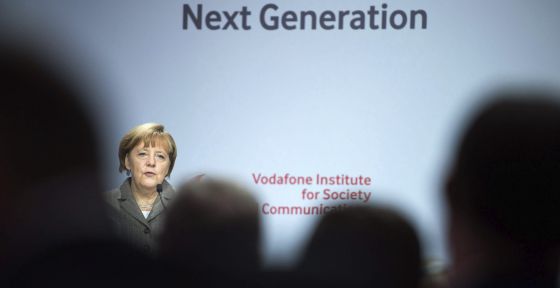On AK Party’s successes and failures by Bican Şahin*
http://www.todayszaman.com/op-ed_on-ak-partys-successes-and-failures-by-bican-sahin-_345587.html
The Justice and Development Party (AK Party), having received 45 percent of the vote, was ranked first in the March 30 mayoral elections. Based on these results, we must say that it won a landslide victory. However, despite this relative success, we cannot possibly argue that it won an absolute victory.
I think the election performance of the AK Party on March 30 indicates both success and failure. Compared to its rivals, including the Republican People's Party (CHP) and the Nationalist Movement Party (MHP), we can of course argue that the AK Party was successful, given that its votes are equal to the votes of the other two combined. However, given its 50 percent share of the vote in the 2011 parliamentary elections and the opinion polls before the Gezi Park protests suggesting that its share was well above 50 percent, it can be said that the AK Party was not successful in the recent local elections. From this perspective, we can conclude that the AK Party lost some of its support due to the Gezi protests and the developments surrounding the Dec. 17, 2013 corruption operation.
However, we should also note that there is success within this failure of the AK Party as well. Despite serious corruption charges directed at leading members of the party, including the prime minister, the AK Party preserved 90 percent of its votes, if we take the 50 percent they received in the last elections as a reference point.
What factors played a role in this relative success of the AK Party? The primary factors and reasons include the economy, ideological affiliations, domestic and foreign security, leadership, the election campaign as well as democratic concerns. Any analysis by which we might determine which of these has been most influential on the election results will remain a hypothesis unless it is supported by empirical study. And, of course, it is only natural that some hypotheses seem more logical than others.
The hypothesis focusing on economic factors asserts that owing to its successful performance in the field of the economy over the last 12 years, the AK Party attracted greater support from the people compared with other parties and that it preserved its voter support because no economic crisis occurred before the most recent local elections.
Looking at AK Party's ideology
The hypothesis focusing on the ideological orientation of the supporters asserts that the AK Party has a solid and strong ideology and that subscribers to this ideology remained loyal to their party in the March 30 mayoral elections.
The hypothesis about domestic and external security says the AK Party's election success can be best explained by confidence in a strong party such as the AK Party at a time when national security was at stake. Another hypothesis focuses on leadership and the election campaign. This hypothesis asserts that the primary reason for the AK Party's ability to preserve its popular support is Prime Minister Recep Tayyip Erdoğan's charisma and election campaign.
Finally, we can also talk about a democratic awareness hypothesis, which argues that people voted for the AK Party in the March 30 mayoral elections because they considered the Dec. 17 operation to be a coup attempt against the government and therefore they wanted to express their support for civilian authority and rule.
Let me start by assessing the final hypothesis first. I believe that only a small number of people who would not have voted for the ruling party anyway voted for the AK Party in the aftermath of the Dec. 17 process in an attempt to show their support for democracy. And I do not agree with the argument that someone who voted for the AK Party before and is happy with its current performance would vote for it again out of a desire to protect democracy. This might reinforce the tendency of a person who already votes for the AK Party. To this end, I believe that generalizations based on the 45 percent the party received that say the people expressed support for democracy and taught the coup-makers a lesson are not realistic. Such generalizations are a case of intellectuals imposing their own thinking and assumptions on the masses.
Although we can assume that 45 percent of the voters expressed support for the AK Party to preserve democracy, we cannot argue against the assertion that 55 percent of voters were motivated by their opposition to authoritarian tendencies, corruption and a decline in the supremacy of law. However, we all know that at least part of the 45 percent of people who voted for the AK Party have remained silent about antidemocratic moves and that a substantial part of the 55 percent of the people who did not vote for the AK Party also remained indifferent to some antidemocratic developments, including the case to dissolve the AK Party and some decisions of the Constitutional Court.
I think the hypothesis suggesting that the AK Party's success is attributable to strong leadership abilities and an effective election campaign is at least partially true. To this end, it could be argued that Erdoğan's charismatic leadership and an election campaign based on a distinction between friends and enemies, as suggested by Carl Schmitt, contributed to the AK Party's election success. In the election rallies, Erdoğan delivered a strong message that an operation had been plotted by his enemies (the Hizmet movement) against himself and his friends. This might have led some supporters who previously voted for the AK Party but questioned this support after the corruption operation to reconsider their decision and express full support for the leader and fellow party members. But I do not think this is the main determinant in the AK Party's election success. Before the consolidation of a support base through charisma and this friend/enemy discourse, support must have already been created.
The hypothesis suggesting that voters preferred the AK Party because of security reasons may be partially accurate. The perception is that the domestic security threat has diminished after the settlement process initiated by the government; this was considered a major success of the ruling party. On the other hand, the Syrian crisis still remains a source of external threat for Turkey. An armed confrontation with Syria has become even more likely because of developments around the Tomb of Suleyman Shah in Syria, the downing of a Syrian aircraft and the likelihood of a response from the Turkish military before the elections. These developments might have contributed to voters' desire for a stronger government. To this end, it can be argued that AK Party voters supported the government because of their perception of an external security threat.
The first question that needs to be asked about the hypothesis concerning subscription to a political ideology is whether the AK Party has a coherent ideology. We know that the AK Party did not have a concrete ideology when it was founded, and that it searched for a coherent political ideology after coming to power. Out of this search, the party agreed on a conservative-democratic identity. It is not wrong to argue that this position indicates a liberal stance in political matters, a social stance in economic issues and a conservative standpoint on cultural affairs. We can also argue that this position remained steady in the period from 2002 to 2010. However, it is also apparent that the liberal tone in the AK Party's ideology started to disappear in the aftermath of the 2011 parliamentary elections, being replaced by a nationalistic-conservative discourse.
A populist conservative identity and approach
As of today, it is possible to argue that the AK Party's political-ideological position indicates a populist conservative identity and approach. To this end, we can further argue that the AK Party is a political party that has changed significantly in relation to the conditions while preserving its conservative character, rather than a party with a strong and coherent political ideology. On the other hand, the majority of AK Party supporters are moderately nationalist-conservative right-wing voters. Before the 2002 elections, these people had voted for either the True Path Party (DYP), the Motherland Party (ANAP) or the Welfare Party (RP). However, almost all of these voters are now represented by the AK Party. It is possible to argue that these voters are acting ideologically as long as they refrain from voting for a left-wing party. However, this also suggests that voting for a single party rather than three different ones with right-wing orientations is a pragmatic approach and that they view the party's general orientation as the main factor. This further reveals that these voters will choose alternatives within the right-wing orientation in the case of a serious failure.
I strongly believe that the most plausible hypothesis to explain the AK Party's relative success in the March 30 elections is the one focusing on the economy. This suggests that the AK Party has performed well in the economic field since coming to power in 2002. The macroeconomic indicators of the Turkish economy have improved since the 2001 crisis.
In this respect, the rate of inflation declined and the economy grew fast. Of course, the government holds the lion's share in this success. The ruling party took advantage of this success; as a result of this, it increased its share of the vote from 34 percent in 2002 to 41 percent in 2004 and 46.6 percent in 2007. The only exception to this stable increase was after the negative growth performance in Turkey in the aftermath of the global economic crisis in 2008; the AK Party received 38.4 percent of the vote in the local elections held after the crisis.
However, the economy improved after 2009, and the AK Party received 49.8 percent of the vote in the 2011 parliamentary elections. And its share of the vote was 45 percent in the March 30 mayoral elections. The most important question that needs to be asked at this point is why the AK Party experienced a 5 percent decline in its share of the vote despite there being no economic instability during this process and no significant change in the national economic performance. I think the answer to this question should be sought within the authoritarian tendencies of the AK Party since the 2011 elections and the most recent corruption scandal. But I am not going to discuss that in detail here.
The hypothesis about political ideology explains why voters did not prefer left-wing parties, but it fails to offer an explanation as to why they did not prefer parties such as the Democrat Party (DP), which holds a similar ideology to the AK Party. I believe the answer is economic performance. Of course, it is not reasonable to argue that the other factors have had no influence on the AK Party's success. But I do suggest that the hypotheses focusing on other factors are only explanatory if they are considered along with the economic hypothesis.
*Dr. Bican Şahin is an associate professor at Hacettepe University.








